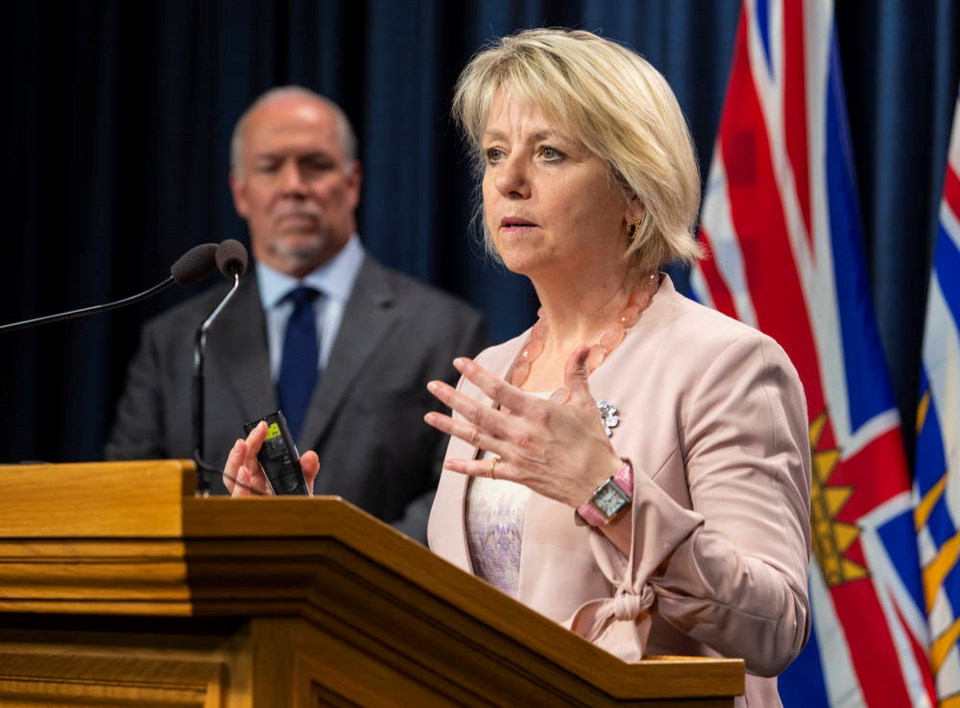B.C. is making significant changes to the pandemic plan that are designed to cope with both a COVID-19 surge and the upcoming influenza season and could last for the next 18 months.
It’s not Plan B. But it includes major refinements to the initial emergency response in the spring, based on lessons learned. There’s also a reversal on the approach to gradually and continuously ease restrictions, with the closure of all nightclubs announced Tuesday.
The new commitments are budgeted at $1.6 billion, the largest single-purpose increase ever in the health budget.
Prevention measures like handwashing and social distancing will continue to be stressed. But the response measures are being adapted. The wholesale cancellation of non-emergency surgeries to create more room for pandemic patients, as happened in the spring, won’t be the first line of defence this winter.
That move was made out of fear of a catastrophic surge like the one that hit northern Italy. It emptied thousands of hospital beds but only 149 COVID-19 patients were in hospital at the spring peak. It created a surgery backlog that the system is still clearing.
The new worst-case scenario in the fall plan is for twice the number of spring cases. Officials said that could be accommodated even with the surgical catch-up program underway and an expected increase in patients admitted with influenza.
The plan is to mitigate the annual increase in flu cases with an aggressive flu vaccination program. Almost two million doses will be available, about 400,000 more than normal.
Also, a pilot Hospital At Home project in Victoria will see more patients discharged early and monitored closely, to keep more beds open.
There’s also a massive hiring program to add as many as 7,000 staff in the long-term care sector, to keep elderly people safer and healthier.
Premier John Horgan said the government is eyeing laid- off hospitality workers as one potential labour pool.
“They understand service. Those critical core skills, with our specialized training, will provide them with a rewarding, well-paying career that will make a significant and positive impact on our health-care system and the seniors who rely on it.” The hiring drive and the training alone is estimated at $44 million.
Another 100 people are also being hired to do contact tracing in the health regions, on top of the 500 additional staff budgeted several weeks ago. In addition to tracking down people who were in contact with patients who tested positive, they monitor the isolation protocols of those identified. That count is currently 3,000 people.
There is also a big increase planned in B.C.’s testing capacity. The provincial test rate is about half the national average because B.C. officials are more selective in administering them. But the capacity is being roughly doubled, to 20,000 a day to deal with both COVID-19 and influenza.
There are a few departures from B.C.’s previous stance in the new plan. The big one is the commitment to keep hospitals running at regular capacities even in the face of the expected surge in cases.
The abrupt shutdown of nightclubs and earlier liquor-serving cut-offs at bars and restaurants this week is another big change.
Health Minister Adrian Dix and provincial health officer Dr. Bonnie Henry repeatedly stressed as the economy reopened in May that they did not want to flip back and forth on restrictions.
“We do not want to be starting and stopping and starting and stopping,” Henry said then. “My intent is not to add restrictions back on.”
But the sustained hike in positive tests from July onward, with many of them attributed to the close-quarters bar scene, forced a rethink of that.
The thinking about a regional approach has also altered slightly.
B.C.’s health leaders have rejected any thought of making regional allowances in the prevention measures to reflect the fact the vast majority of cases are in metro Vancouver and the Fraser Valley. That continues to this day.
But on hospital bed management now there will be a more tailored approach and six task forces taking “a staged approach to regionally managing a staged response to regional surges in demand.”
It’s a robust new plan that would be easier to implement if the case count this summer had not jumped back up to the emergency levels that prompted the initial response.



